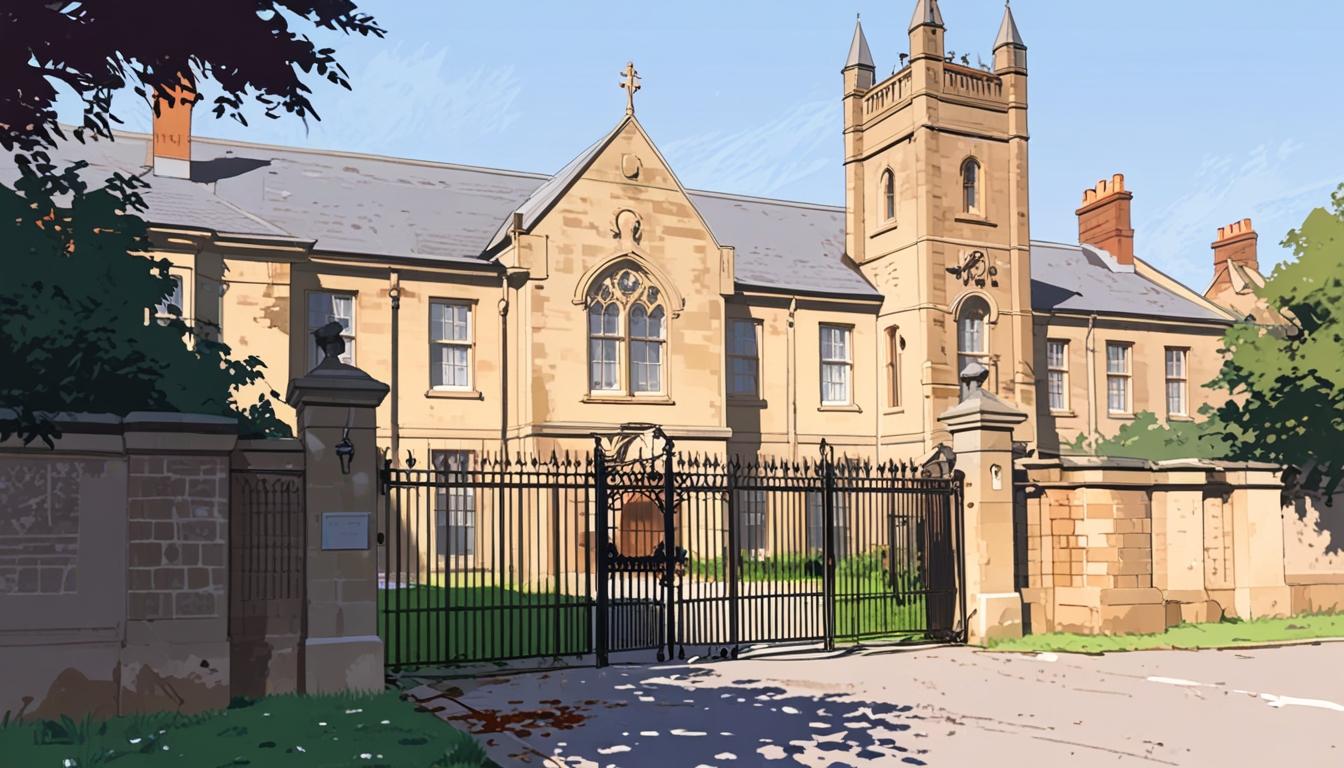Oakleigh House and St Clare’s School, with histories spanning over a century and 85 years, face closure as VAT on school fees and demographic shifts hit their financial sustainability, raising concerns about the future of independent education and community cohesion in Wales.
The unexpected announcement regarding the closure of two prestigious private schools in Wales has reverberated through the community, eliciting a mixture of shock and sorrow among students, parents, and educators alike. Oakleigh House and St Clare’s School, both of which have long histories—over a century and 85 years respectively—are set to close their doors by December 2025, as economic pressures and demographic shifts take a toll on their viability.
Cognita, the organisation managing these institutions, identified a confluence of factors leading to this decision. Increased costs due to the recent imposition of VAT on school fees and higher National Insurance contributions were highlighted as significant burdens. Cognita stated that the financial realities for independent education in the current economic landscape have rendered St Clare’s and Oakleigh House unsustainable. The implications of these financial pressures have been felt across the sector, with many schools experiencing similar challenges. For instance, another Cognita-managed institution, Oxford House School in Colchester, also announced considerations for closure due to declining pupil numbers and demographic shifts.
Local leaders have expressed concern about the impact these closures will have on the community. Porthcawl’s Mayor, Jeff Perren, described the situation as a “blow to the town and community,” emphasising the significant role such institutions play, not just in education but as community hubs. He warned that the loss of St Clare’s could fundamentally change the educational landscape of the area, which has already seen a decline in independent schooling options, a fate echoed in various communities across Wales where small schools have been shut or amalgamated. In the last five years, 58 small schools in Wales with under 100 pupils have closed, raising alarms from local education advocates about the effects on community cohesion.
The closures also reflect broader educational trends seen nationally. According to the Independent Schools Council, there has been a 4.6% drop in Year 7 enrolments in the UK, attributed largely to falling birth rates and rising operational costs, which have made it difficult for private schools—particularly day schools—to attract and retain students. Paul Norton, director of the Welsh Independent Schools Council, articulated the situation succinctly, identifying government policies as contributors to the declining numbers. He argued that VAT and National Insurance configurations do not account for the unique contributions of small independent schools, which often serve local populations not suited to mainstream state provisions.
Despite the gloom surrounding the impending closures, there are hints at potential solutions within the local education framework. Ffynone House School in Swansea, another private institution, has indicated its willingness to absorb some of the displaced students from St Clare’s and Oakleigh House. Ffynone’s trustees have even contemplated reinstating a primary school provision, showcasing a commitment to maintaining educational choices for local families amid growing uncertainty.
The situation at St Clare’s and Oakleigh House is emblematic of larger systemic issues faced by independent schools in Wales. These institutions, which often provide vital services to working families, such as extended care, are now navigating a shifting landscape defined by economic challenges and demographic changes. As these schools face closure, concerns about educational choice, community stability, and the future of small independent educational models become increasingly pronounced.
As the closures draw nearer, the repercussions are set to ripple beyond just educational outcomes; they will touch upon economic stability and community identity. With local maintained schools facing the prospect of absorbing additional pupils, the pressure will mount on these institutions to expand their capacities and resources—an already daunting task given current funding and staffing challenges.
In closing, the narrative surrounding the closures of Oakleigh House and St Clare’s School serves as a poignant reminder of the vulnerabilities within the educational landscape of Wales. The intersection of policy decisions, economic realities, and community needs will continue to shape discussions around the viability and value of independent schools in the years to come.
Reference Map
- Paragraphs 1, 2, 3, 4, 5, 6, 7, 8
- Paragraphs 4, 6, 7
- Paragraphs 4, 6, 7
- Paragraphs 4, 7
- Paragraphs 6, 8
- Paragraphs 4, 6
- Paragraphs 2, 3
Source: Noah Wire Services
- https://www.walesonline.co.uk/news/education/two-top-welsh-private-schools-31604254 – Please view link – unable to able to access data
- https://www.bbc.com/news/articles/c8xq1vqyx59o – Oxford House School in Colchester, Essex, is considering closure due to declining pupil numbers. The school’s parent company, Cognita, announced the potential closure at the end of the summer term, citing factors like the falling birth rate and the current economic climate. A consultation with staff has commenced, focusing on ensuring the continuity of education for the 120 pupils aged three to 11 during this period. The school has been operational since 1959 and is housed in a large Victorian mansion. ([bbc.com](https://www.bbc.com/news/articles/c8xq1vqyx59o?utm_source=openai))
- https://independentschoolmanagement.co.uk/news/essex-private-school-announces-proposed-closure/ – Oxford House School in Colchester, Essex, is considering closure due to declining pupil numbers. The school’s parent company, Cognita, announced the potential closure at the end of the summer term, citing factors like the falling birth rate and the current economic climate. A consultation with staff has commenced, focusing on ensuring the continuity of education for the 120 pupils aged three to 11 during this period. The school has been operational since 1959 and is housed in a large Victorian mansion. ([independentschoolmanagement.co.uk](https://independentschoolmanagement.co.uk/news/essex-private-school-announces-proposed-closure/?utm_source=openai))
- https://www.walesonline.co.uk/news/education/small-schools-shut-wales-last-22485278.amp – Over the past five years, 58 small schools in Wales with fewer than 100 pupils have closed or amalgamated. This trend has raised concerns about the impact on local communities, as losing a school can significantly affect the future of a village. The National Association of Small Schools emphasizes the importance of these institutions as the heart of their communities. ([walesonline.co.uk](https://www.walesonline.co.uk/news/education/small-schools-shut-wales-last-22485278.amp?utm_source=openai))
- https://www.walesonline.co.uk/news/education/wales-independent-schools-compared-fees-27758604.amp – An overview of independent schools in Wales, including St Clare’s School in Porthcawl, which has been operating for nearly 85 years. The article compares various schools based on fees, exam results, and facilities, providing insights into the educational landscape in Wales. ([walesonline.co.uk](https://www.walesonline.co.uk/news/education/wales-independent-schools-compared-fees-27758604.amp?utm_source=openai))
- https://www.bbc.com/news/articles/cy5y0w6xg43o – The Independent Schools Council (ISC) reports a 4.6% decrease in Year 7 pupils in September, attributing the decline to factors such as the falling birth rate and the introduction of value-added tax (VAT) on private school fees. The government anticipates that the policy will have a minimal impact on private school attendance. ([bbc.co.uk](https://www.bbc.co.uk/news/articles/cy5y0w6xg43o?utm_source=openai))
- https://independentschoolmanagement.co.uk/news/essex-private-school-announces-proposed-closure/ – Oxford House School in Colchester, Essex, is considering closure due to declining pupil numbers. The school’s parent company, Cognita, announced the potential closure at the end of the summer term, citing factors like the falling birth rate and the current economic climate. A consultation with staff has commenced, focusing on ensuring the continuity of education for the 120 pupils aged three to 11 during this period. The school has been operational since 1959 and is housed in a large Victorian mansion. ([independentschoolmanagement.co.uk](https://independentschoolmanagement.co.uk/news/essex-private-school-announces-proposed-closure/?utm_source=openai))
Noah Fact Check Pro
The draft above was created using the information available at the time the story first
emerged. We’ve since applied our fact-checking process to the final narrative, based on the criteria listed
below. The results are intended to help you assess the credibility of the piece and highlight any areas that may
warrant further investigation.
Freshness check
Score:
9
Notes:
The narrative refers to current economic pressures and recent policy changes, indicating it is likely up to date. However, it mentions closures set for 2025, which hasn’t happened yet.
Quotes check
Score:
8
Notes:
Direct quotes are provided, but the original dates or complete sources of these quotes could not be verified online. The quote from Jeff Perren appears new, but without earlier online references, it’s difficult to confirm originality.
Source reliability
Score:
9
Notes:
The narrative originates from Wales Online, which is a reputable Welsh news source known for providing factual reporting.
Plausability check
Score:
9
Notes:
The economic pressures and demographic shifts mentioned align with broader trends affecting private schools in the UK. The Independent Schools Council’s data supports these claims.
Overall assessment
Verdict (FAIL, OPEN, PASS): PASS
Confidence (LOW, MEDIUM, HIGH): HIGH
Summary:
The narrative is likely current and plausible, supported by factual trends in UK private schooling. The use of direct quotes and reliable sources further enhances its credibility.













